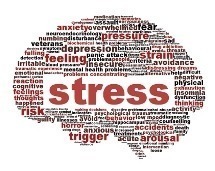The Link between Brain, Stress and Creativity
November 26, 2013//Comments Off on The Link between Brain, Stress and Creativity
 Baba Shiv: How Do You Find Breakthrough Ideas? (Stanford Business):
Baba Shiv: How Do You Find Breakthrough Ideas? (Stanford Business):
- “If the brain is experiencing highly physiologically arousing emotions associated with stress, then our first instinct will be to stay away from excitement and seek comfort instead. Studies have shown that primates under stress, for example, will not pursue new territories or mates. Under stress, humans also hang on to the familiar. Once the brain calms, however, it becomes prone to boredom. It will then begin to seek arousal in the form of dopamine, from the excitement pathway. This is when both you and your baboon friend will seek out new territories.”
- “Studies show, however, that stress is a poor motivator. In his best-selling book, Thinking Fast and Slow, Princeton’s Daniel Kahneman explains why. Of the brain’s two basic neural pathways, the first — from anxiety to calm — does not inspire outside-the-box thinking. Workers are so insecure and stressed that they creep along in terror until they find safety. The goal, then, is to get workers engaging the second pathway — from complacency to excitement — which is much more likely to trigger innovation. That shift is achieved primarily through positive reinforcement: encouragement, respect, and enhanced responsibility.”
- “Democratizing where innovation can come from, encouraging grass-roots ideas, and utilizing social recognition are powerful methods for encouraging innovation. But the most inspiring method is, as Gandhi affirmed, to “be the change.” A manager who takes time to feed her own creative side well is the one who knows how to elicit the creativity of others best.”
To Learn More:
Posted in Education & Lifelong Learning, Peak Performance
About SharpBrains
SHARPBRAINS is an independent think-tank and consulting firm providing services at the frontier of applied neuroscience, health, leadership and innovation.
SHARPBRAINS es un think-tank y consultoría independiente proporcionando servicios para la neurociencia aplicada, salud, liderazgo e innovación.


